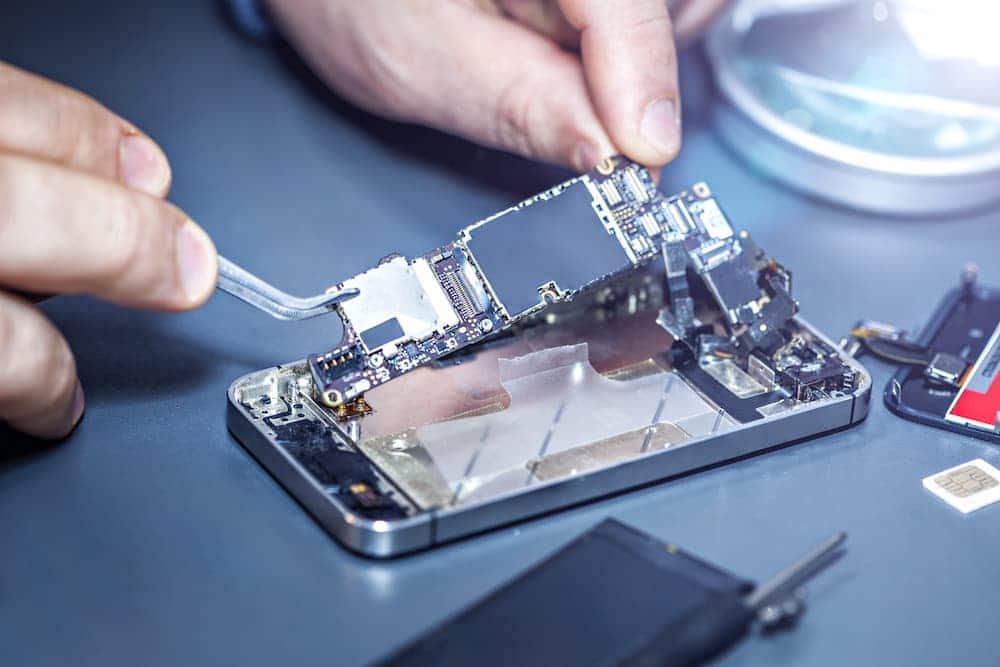The Role of Software in Mobile Phone Repairs
In today’s digital landscape, mobile phones are more than just communication devices; they are powerful computers that manage a multitude of tasks. When a mobile phone malfunctions, it’s often not just hardware issues at play; software can also be a significant factor. This article explores the critical role of software in mobile phone repairs, covering common software issues, diagnostic tools, and the importance of updates.
1. Understanding Software Issues
A. Common Software Problems
Mobile phones can experience various software-related problems that may mimic hardware failures. Understanding these issues is essential for effective diagnosis and repair.
Operating System Glitches: Crashes, freezes, or slow performance can often be traced back to operating system glitches, which may require a simple reboot or software update.
App Malfunctions: Apps may become unresponsive or crash due to bugs, outdated versions, or conflicts with other software.
Data Corruption: Corrupted files or settings can lead to malfunctions, often requiring a reset or data recovery process.
B. Identifying Software Issues
Properly identifying software issues is critical in the repair process. Here’s how technicians typically approach this:
User Reports: Gathering detailed descriptions from users about the problem can help pinpoint whether it’s a hardware or software issue.
Error Messages: Observing any error messages that appear on the screen can provide clues for diagnosing the problem.

2. Diagnostic Tools and Software
A. Diagnostic Applications
Mobile technicians often utilize diagnostic software to assess the condition of a device and identify software issues. These applications can run tests on various components and provide insights into performance.
Benchmarking Tools: These applications measure the device’s performance, identifying slowdowns or unusual behavior that could indicate software-related problems.
System Monitoring Tools: These tools can provide real-time data on system resources, helping to identify apps or processes that consume excessive power or memory.
B. Firmware and Software Utilities
Firmware plays a crucial role in the functionality of mobile devices. Technicians may need to access specific firmware updates or recovery utilities to resolve issues.
Flashing Firmware: In some cases, flashing the firmware can restore a device to its original state, fixing persistent software problems.
Recovery Modes: Utilizing built-in recovery modes allows technicians to reset devices or clear cache, which can resolve software issues without losing personal data.
3. Importance of Software Updates
A. Security Patches
Regular software updates are essential for maintaining the security and performance of mobile devices. These updates often include critical security patches that protect against vulnerabilities.
Data Protection: Keeping software up to date helps safeguard user data from potential breaches or exploits.
Malware Defense: Many updates include enhanced defenses against malware and other security threats, ensuring the integrity of the device.
B. Performance Improvements
Software updates often bring performance enhancements that can improve the overall user experience.
Bug Fixes: Updates typically include fixes for known bugs, which can resolve issues such as app crashes or slow performance.
New Features: Regular updates may also introduce new features, improving functionality and user satisfaction.
4. The Role of Mobile Repair Software
A. Repairing and Restoring Devices
Specialized mobile repair software can assist technicians in diagnosing and repairing software-related issues more effectively.
Data Recovery Tools: These can help recover lost or corrupted data, which is crucial for users who may have important files on their devices.
Backup Solutions: Repair software often includes backup functionalities, allowing users to secure their data before a repair process begins.
B. Simplifying the Repair Process
The right software tools can streamline the repair process, making it more efficient and reducing turnaround times.
Automated Diagnostics: Some software can automatically diagnose issues, saving technicians time and improving accuracy.
Remote Support: Mobile repair software may also offer remote support features, enabling technicians to assist users without needing a physical presence.
5. Training and Expertise
A. Keeping Up with Trends
As mobile technology evolves, technicians must stay informed about the latest software updates, tools, and repair techniques. Regular training and professional development are vital for maintaining expertise.
Workshops and Courses: Participating in workshops and courses focused on mobile software repairs can enhance a technician’s skills.
Online Resources: Utilizing online forums and tutorials can provide valuable insights and tips from industry experts.
B. Understanding Different Operating Systems
Different mobile operating systems, such as Android and iOS, have unique software structures. Technicians should familiarize themselves with the nuances of each platform to provide effective repairs.
Platform-Specific Tools: Understanding which tools and software are best suited for each operating system can improve repair outcomes.
User Interface Knowledge: Being well-versed in the user interfaces of different systems allows technicians to better communicate with users regarding their issues.
6. Conclusion
Software plays a vital role in the performance and repair of mobile phones. From diagnosing common software issues to utilizing specialized repair tools, understanding the software landscape is crucial for effective mobile phone repairs. Regular updates, security patches, and training in the latest technologies can significantly enhance a technician’s ability to address software-related problems. By recognizing the importance of software in the repair process, both technicians and users can ensure that mobile devices remain functional, secure, and efficient for everyday use.







